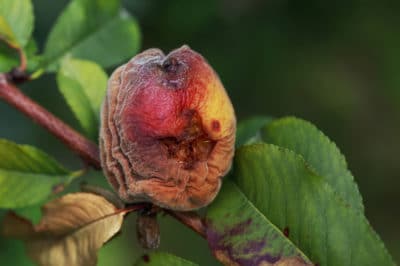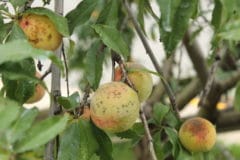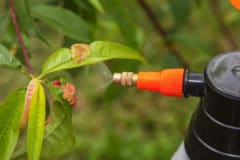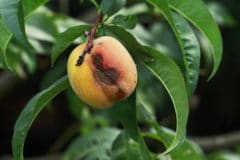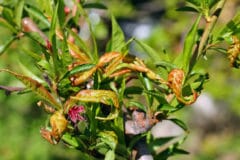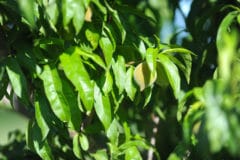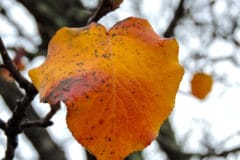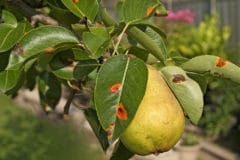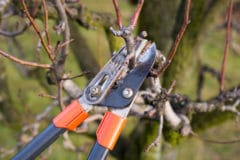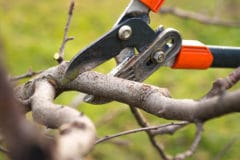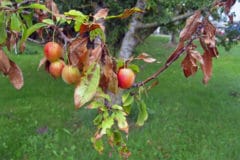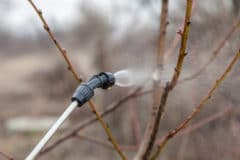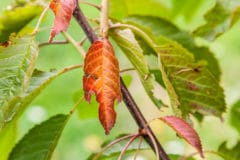The Most Common Peach Tree Diseases
Many of the most serious peach tree diseases are caused by funguses and bacteria. The most common are:
Bacterial Spot
This disease affects both the fruit and leaves of the tree. Purplish-red spots with a white area in the center show up on the surface of leaves at the beginning of the infection. Later, these areas fall out, leading to this disease also being known as shot-hole disease.
The bacteria also infects twigs, causing cankers which produce a gummy substance. Affected fruit is often still edible by removing the spots and darker areas in the flesh below.
Bacterial spot often occurs on trees planted in locations with too much humidity and wind. The pathogen enters the tree through damaged bark and branches. Some peach varieties are resistant to bacterial spot, including:
- Southern Pearl
- Candor
- Norman
- Winblo
Brown Rot
Brown rot is a serious fungal disease affecting peach trees. Infection begins with cankers on fruits and twigs which exude a gummy residue. Fruit begins showing small, dark spots similar to bacterial spot, but the infection soon ruins the entire fruit. Infected fruits later dry-up and look mummified.
Prevent the spread of brown rot by carefully remove all mummified fruit from the tree and the ground below as soon as you find it. Dispose of diseased fruits off-site. In severe cases, spraying a fungicide may be necessary.
Peach Leaf Curl
Peach leaf curl affects the leaves by causing them to pucker, twist, and develop a reddish color. Leaves then become covered with grey spoors and drop, depriving the tree of energy and weakening it.
Peach leaf curl can usually be prevented by spaying the tree with a solution of lime-sulfur fungicide while the tree is dormant in winter.
Peach Scab
This disease is less dangerous to the overall health of the tree, but it causes unappetizing cracks and spots on the fruit. New growth and twigs can also be affected with purple and brown lesions.
Keeping good air circulation inside the tree by properly pruning the tree in the dormant season is one solution for prevention of peach scab. Fungicides can be used for severe infections.
Peach Yellows
This serious peach tree disease is spread by leafhoppers, resulting in deformed branches which look like brooms and poor-quality fruit. Cut out infected branches as soon as you find them and burn them or dispose of them off-site
